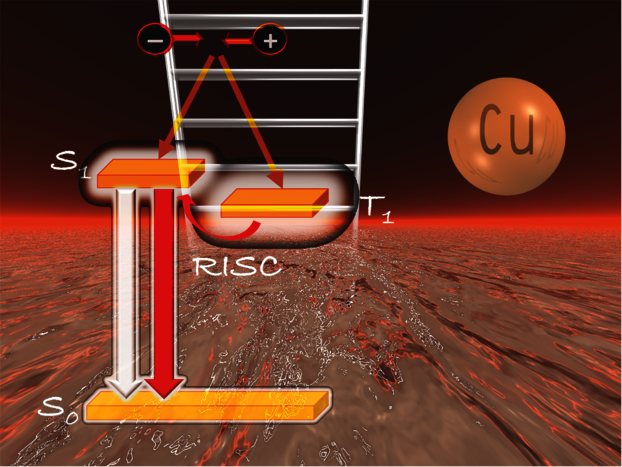Most popular articles in 2022 for Journal of Materials Chemistry C
“TADF: Enabling luminescent copper(i) coordination compounds for light-emitting electrochemical cells”, was one of the most popular articles published in Journal of Materials Chemistry C in 2022.
The Royal Society of Chemistry Journal of Materials Chemistry C is one of the society’s highranked materials science journals (Impact factor 8.067) and has recently identified an article from the Department of Chemistry at the University of Basel as one of the most popular articles published in 2022. The article by Professors Catherine E. Housecroft and Edwin C. Constable entitled “TADF: Enabling luminescent copper(I) coordination compounds for lightemitting electrochemical cells” [1] concerns the phenomenon known as thermally activated delayed fluorescence (TADF) which can be utilised to increase the efficiency of photonic devices from a maximum of 25% to a (theoretical) 100% by harvesting of both singlet and triplet spin states.
TADF functions by making formally forbidden transitions between different spin states accessible and has become a topic of intense interest in the past 10 years. Early approaches to the problem relied on heavy transition metals such as ruthenium, osmium or iridium which exhibit large spin-orbit couplings which facilitates spin state change. TADF allows systems to be developed which do not require the use of expensive, rare, and non-sustainable heavy metals. In the past ten years, there has been a surge of interest in the light-emitting behaviour of copper coordination compounds which can exhibit TADF. In this article, Housecroft and Constable reviewed recent developments in the field of copper-based ionic transition metal complexes (Cu-iTMCs) for use in light-emitting electrochemical cells (LECs) and summarize their significant contributions to the area.
Dr. Marco Meyer who successfully defended his doctoral thesis in this area in December 2022 commented “It is great to see how our contributions fit into a broader effort to develop new and sustainable technologies” whilst Masters student Deyanira Gejsnaes Schaad said “I loved seeing how the compounds I was making in my project have real-world relevance”.
Ed and Catherine are, of course, delighted with the reception that their article has had and are optimistic that these chemical studies may impact future lighting technologies.
Original Publication
C.E. Housecroft and E.C. Constable
TADF: Enabling luminescent copper(i) coordination compounds for light-emitting electrochemical cells
J. Mater. Chem. C, 2022, 10, 4456-4482; DOI:10.1039/D1TC04028F
Further Information
- Website research group Constable
- Website research group Housecroft

